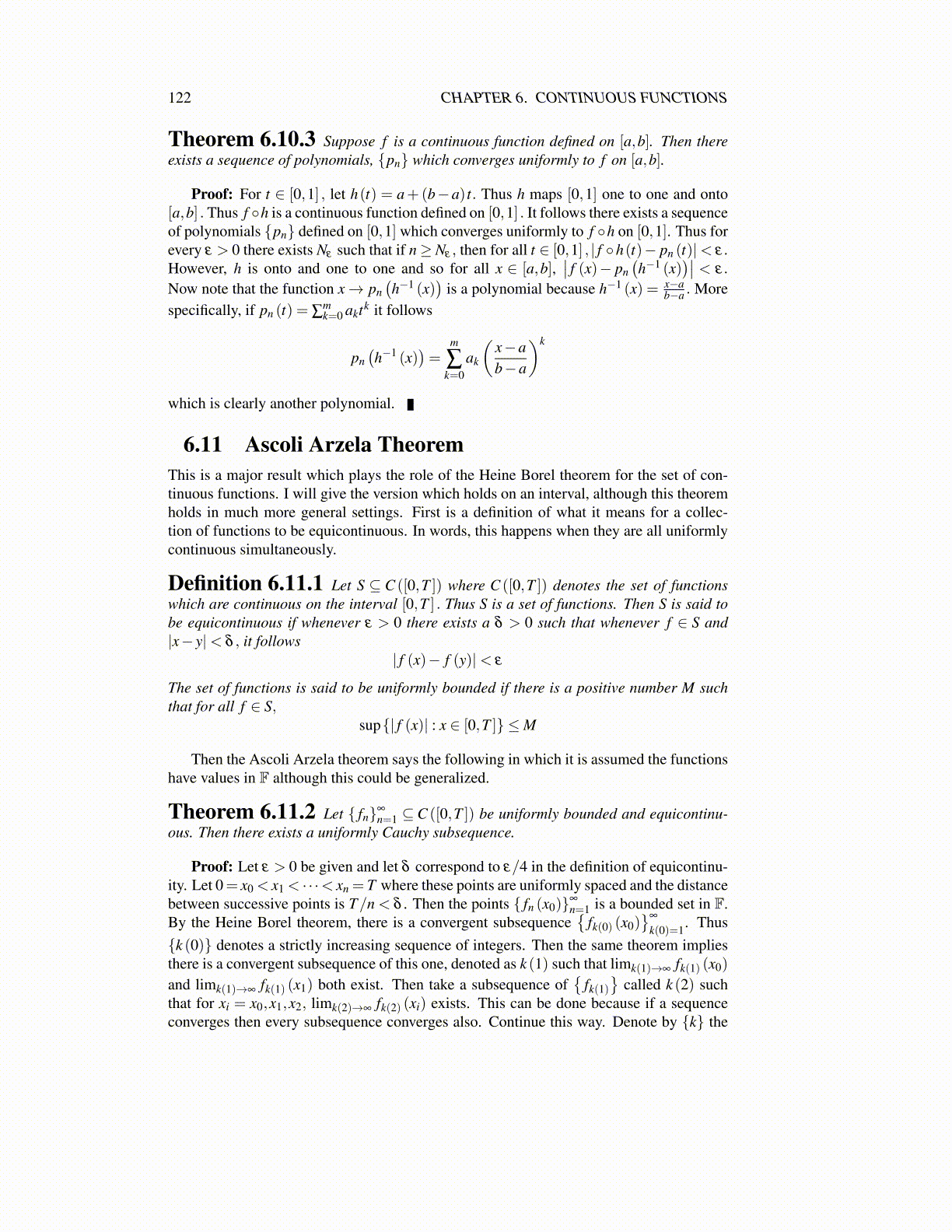
122 CHAPTER 6. CONTINUOUS FUNCTIONS
6.12 Space Filling Continuous CurvesWhen you have a function θ : [a,b]→ Rp, which is continuous, then the set of pointsobtained θ ([a,b]) is called a continuous curve. One of the horrifying examples which cameout in the late nineteenth and early twentieth centuries was a space filling curve. Peano wasthe first to find one of these but there are many related results, all counter intuitive. Here isa simple example of how these things can occur.
Consider the following picture of a square Q having sides equal to 1 subdivided intofour equal squares and an interval divided into four equal sub-intervals as shown.
I11 I1
2 I13 I1
4
Q11 Q1
2
Q13Q1
4
Let θ 1(I1i)= Q1
i as shown. Now the important thing about this is that if two of theintervals I1
k , I1l are adjacent, then so are are the squares Q1
k and Q1l . Subdivide I1
i intofour equal intervals and Q1
i into four equal squares in exactly the same way. Denote theresulting intervals by I2
i and Q2i so there are now 16 of these intervals and squares, still with
the property that if I2k , and I2
l are adjacent, then so are Q2k and Q2
l . Continue this way suchthat each In+1
l is contained in some Ink and then θ n
(Ink
)⊇ θ n+1
(In+1l
)and adjacent adjacent
intervals are mapped to adjacent squares. The diameter of the union of two adjacent squaresin the nth stage of the construction is 2(2−n).
Now if x ∈ I, the original interval, x = ∩∞n=1In
knfor a sequence of nested intervals In+1
kn.
Define θ (x) ≡ ∩∞n=1θ n
(Inkn
). This is well defined because if you have two sequences
of intervals having x equal to their intersection, then since the adjacent intervals go toadjacent squares, the diameter of θ n
(Inl
)∪θ n
(Ink
)for x in both In
k and Inl is no more than
2(2−n) showing that the definitions of θ (x) do not differ by more than this for each n.This is also why θ is continuous. If xr → x, and n ∈ N, eventually, for r large enough,|xr− x|< 5−n. It follows that both x,xr are in a single In
k or else there are adjacent intervalsInk , I
nl such that x is in one and xr is in the other. Hence θ (x) is in some θ n
(Ink
)and θ (xr)
is in either θ n(Inl
)an adjacent square or in θ n
(Ink
). Either way, the construction implies
that ∥θ (x)−θ (xr)∥ < 2(2−n). Thus θ is continuous. It is clear that θ is onto because
if y ∈ Q, then there is a nested sequence of squares{
Qnkn
}∞
n=1with y = ∩nQn
knand then
θ
(∩nIn
kn
)≡ θ (x) = y. However, θ is not one to one.
The last assertion about θ not being one to one relates to the fact that if θ were oneto one, then its inverse would also be continuous and the interval and the square wouldbe what is called homeomorphic. However, if you remove a point from the middle of theinterval, the result is not connected but if you remove a point from the square, the result isconnected. This could not happen because, as discussed earlier, the continuous image of aconnected set is connected.
Proposition 6.12.1 Let Q be a square. Then there exists a continuous mapping θ whichmaps the unit interval [0,1] onto Q.
Note that Q could have been an n dimensional cube. You would just need to subdivideintervals into more equal pieces. This shows that there are space filling continuous curves